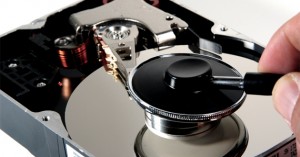It can be a devastating moment when you make the discovery that the irreplaceable information that was once taken for granted as just ‘being there’ has now disappeared. The recent terrible Hurricane Sandy storms and especially the power outages in the Manhattan and New Jersey areas have generated a huge need for data recovery in New York.
As many businesses rebuild, they will be recovering equipment that appears to be unusable and wondering what they can do to recover their data. Fortunately there are companies who have the equipment and software to make a professional recovery job however; where the damage to the media is physical special treatments must be applied to ensure maximum recovery success.
Those who planned ahead for disaster recovery might have been more reassured had they stored their data not just off-site, but out of State too! Those who relied on cloud computing have the edge as their data probably existed in multiple locations and should have been failover-copied to elsewhere in the cloud. If the cloud was private then the results might not be so comforting for data owners. Companies who had all their data onsite and suffered water/flood damage probably paid the highest price – especially where backups were not stored in robust environments such as in a specialized data-storage safe. The worst scenario in a disaster is where archive/backup data is stored in the same location as the servers it resides on, as there is no safe haven for any data whether backed up or in use.
Once it is all submerged in water or exposed to harsh environments, the recovery options are about the same for archives or live storage. It is dependent on the equipment used and the amount of damage incurred. One of the worst things to do is to try and simply switch everything back on, thinking after it is dry it will be ok. If there has been any water or damp there may be contacts made that will cause further and possibly irreparable damage to the data.
An example might be where a drive has been subject to heat and has slightly warped disk platters. Even though it may power up, a single sweep of the head could trash the disk surface – these things spin at 10,000 rpm which is very fast, so damage occurs quickly when physical tolerances (such as the read head height) are exceeded. Water damage is obviously a bad sign because the drive electronics can short through an invisible water droplet underneath the circuit board and cause the motor to spin erratically, the drive heads to zigzag and all manner of potentially data-damaging faults. Water inside a mechanical drive can create all kinds of unpredictable results when powered up. Part of the answer is to keep great backups but live data cannot necessarily be backed up that regularly. Cloud based live archiving is the most robust answer but hindsight is cheap and time machines are still not even on the horizon.
If you are already affected by storm-damaged data/storage equipment you only have one option: to try and recover it and that usually takes professional assistance. The big message is be very careful before you switch your equipment back on. In some IT repair shops that service large volumes of keyboards, they simply wash them in water/detergent and hang them up to dry, they are heat soaked in a dehumidifier warm room at 74-78 degrees for 7 days before they are used again. A hard drive is a more complex beast so cannot be treated so casually – any electronics that have been submersed or exposed to extreme moisture may have unseen damage that can affect the data stored on them. The best answer is to get professional data recovery assistance because once irretrievably lost, data is often irreplaceable.
